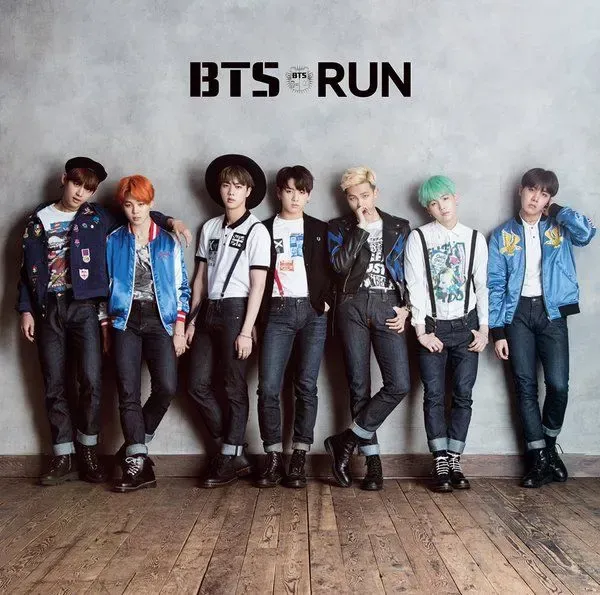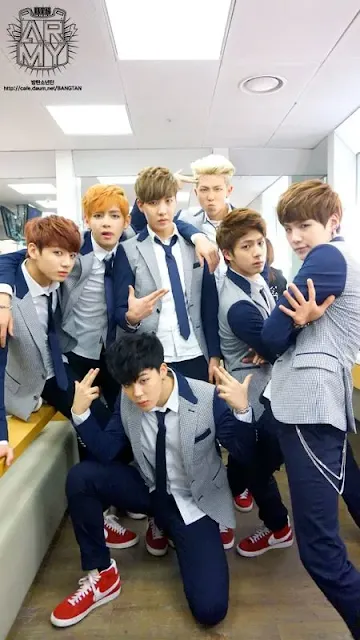RM directly edits digital sounds using a MIDI keyboard in the music production process; he is technically proficient in basic production software. SUGA has been producing for music programs since high school and has a small studio at home, working with a keyboard and digital beat pad. Although J-Hope is known for choreography, he has a strong perception of percussion (rhythm) in music production; he directs the rhythm infrastructures in his solo tracks. Jungkook learned to play guitar on his own; he is often seen singing on acoustic guitar in his videos.
Jin has mastered the piano beyond a basic level; he prefers to sing with piano accompaniment, especially during vocal rehearsals. Although Jimin does not appear to play an instrument officially, he uses software that analyzes sound frequencies to practice vocal resonance. V occasionally experiments with the saxophone due to his interest in both classical and jazz influenced music; it is known that he was especially interested in this instrument during high school.
Technology and Equipment They Use in the Studio
BTS members directly contribute to the production process by using professional music software such as Logic Pro, Ableton and Cubase. SUGA prefers Neumann microphones for recording sound, which are used in many professional studios around the world. When recording his own vocals, Jungkook prefers a ribbon microphone for a smoother sound, a special detail known to experienced musicians.
RM especially likes to produce “layered vocals” in the mixing stage; he often uses the trio of backing vocal, whisper layer and main vocal. Some of the kick and snare sounds used on J-Hope's solo album were filtered directly through an analog drum machine.
Instruments Used in Stage Rehearsals
During live rehearsal, Jungkook usually supports his own vocals with an electric guitar; he is known to play the guitar live in some scenes. The video of Jin's stage rehearsal with acoustic piano went viral on social media before the performance of “Epiphany”. In some live stage rehearsals, SUGA was seen producing beats with a small MIDI keyboard and testing them during soundcheck.
J-Hope works with small digital loop devices instead of a digital metronome to support dance rehearsals. During the stage rehearsal, RM works one-on-one with the music team on voice intonation and infrastructure balance.
Musical Projects Written and Directed by RM
SUGA writes almost all of the beats in his projects under the name “Agust D”; he is directly involved in the infrastructure, melodic structure and even the mixing process. In RM's “mono.” project, he designed tracks with a combination of electronic infrastructure and natural instruments; he was even involved in the mixing process.
In Jungkook's “Still With You”, it is known that he recorded all the vocal layers in his own home and mixed them digitally. In some tracks on J-Hope's “Jack in the Box” album, he directly determined the rhythmic structure himself; he shaped the drum march himself by working one-on-one with the arrangers.
Musical Education Processes and Foundations
SUGA started working part-time with a professional studio during high school in Daegu, where he began to learn beat making and recording techniques on the field. After joining BigHit, Jungkook took both vocal training and music production classes in Seoul, during which time he was sent to the US for a short period of time to support his dance and music development. J-Hope's relationship with music developed through dance; however, it is known that he received special training in music theory and structure analysis for his solo projects.
Since RM started writing rap music, he developed a natural sensitivity to meter, emphasis and sound matching, which gave him an advantage in the production phase. Although Jin was one of the members who started vocal training the latest, he made rapid progress with ear training and special lessons on timbre control. Although much of V's musical sense is shaped by intuition, he has also studied classical vocals and experimented with different resonance techniques.
Sensory Abilities and Instinctive Musicality
Jungkook's vocal color variability allows him to transpose easily in live performances because his tonal sensitivity is so strong. SUGA has an unusually high sensitivity to hearing different frequencies, which is why the balance of treble and bass in their productions is usually very balanced. In some song recordings, V prefers not to disturb the raw texture of the sound, relying more on emotion than technique; this is particularly evident on tracks like “Singularity”.
Jimin's control of vibrato has been described by his vocal teachers as an “innate elasticity”; he consciously controls the fluctuation of note changes. J-Hope has a remarkable ear for synchronizing dance and music; in some choreographies, he even emphasizes the “ghost beats” in the music.
Musical Habits They Use to Prepare for the Stage
Before going on stage, SUGA often listens to their own productions on headphones to practice “refreshing their vocal memory”. Jin hums simple melodies on his own, accompanying the piano with one hand to warm up his voice; this is his way of relaxing. RM rehearses the intonations he uses in his pre-stage speeches in advance; he even tests the emphasis of the voice, its distance from silence in the stage rehearsal.
Jungkook often tests his vocals with the guitar during soundchecks; this creates both a technical and emotional context for him. When V rehearses his voice, he records it and immediately listens to it with headphones and makes immediate corrections; this habit has strengthened his ability to listen to himself from the outside.
Instruments and Techniques Used in Songwriting
RM often starts with snippets of poetry or phrases, which are then matched to notes on a MIDI keyboard to turn them into upbeat or ambient backdrops. In beat making, SUGA often starts with a single loop, layering layers according to the flow of emotion, not rhythm. Most of the tracks J-Hope writes are shaped by a sense of dance first, sometimes just experimenting with the rhythm before the lyrics.
When Jungkook creates melodies, he usually starts with a guitar riff and then adds the vocal melody over it, intuitively determining where the vocal will sit. Jimin takes vocal vibrations into account when writing lyrics; he has said that he chooses some words simply because they match the resonance of his voice.
Instrumental Videos and Live Recording Examples
Jungkook's cover of “10,000 Hours”, which he sang on guitar in his room in 2020, showed how natural not only his vocal but also his instrumental harmonies are. SUGA's performances of “Seesaw”, playing live on a MIDI keyboard, is one of the rare examples of him bringing his musical control directly to the stage. Jin sitting at the piano during the stage openings of “Epiphany” has become a symbol of the importance BTS places on the use of live music.
In some rehearsals, J-Hope accompanied the choreography rehearsals by setting their own tempo with hand drums and rhythm boxes. RM's short ambient piano experiment, which he shared on Instagram after “mono.”, showed that he was also looking for instrumental off-stage.
First Contact with Music in Childhood
RM started rapping the verses he wrote while participating in poetry competitions during his elementary school years, thanks to his natural interest in rhyme and rhythm. SUGA apprenticed at a music studio in middle school, where he first became familiar with recording equipment and experimented with analog sounds. J-Hope's interest in dance gave him an early sense of rhythm, which would later develop into knowledge of timing and beats in music production. Jungkook was not very interested in music as a child, but after watching Rain's stage performances and being impressed, he started singing.
During his school years, Jimin studied traditional Korean dance, which gave him rhythm control, body awareness and physical harmony with sound. Jin grew up more interested in acting than music, but as he studied vocals at university, music became a form of expression for him. V was introduced to classical music in the rural area where his grandfather lived; the string works he heard on the radio influenced his future aesthetic choices.
SUGA performed at a local music competition in Daegu with a self-penned song, a performance that both increased his courage and reinforced his commitment to the stage. When J-Hope performed with street dancers, he developed an instinctive reflex to rhythm and learned to instantly harmonize with the music. Jimin's first stage experience was in a school performance; the breath matches in the song he danced to were instrumental in his transition to vocal training.
When RM took the stage for the first time, the background music was distorted; at that moment, he both recovered the stage and gained self-confidence by rapping improvisationally. After Jungkook's first vocal performance in Seoul, his vocal coaches described his ear talent as “natural harmonic balance”. At his first school concert, V performed the classic Korean folk tune pansori, an experience that nurtured his dramatic vocal style.
Developing Musical Identities Over Time
RM's early aggressive and fast-paced rap style has mellowed over time into a more philosophical and melodic structure. While SUGA initially used hard trap and boom bap infrastructures, they have recently been integrating jazz and classical elements into their productions. In J-Hope's solo work, elements of funk, soul and lo-fi have become more prominent, indicating that he is blending his dance-based aesthetic with sound.
Jimin's vocals have evolved over time with more controlled vibrato and micro-transitions; this is especially evident in the tracks “Lie” and “Serendipity”. Jungkook's own vocal coloring has become more distinct over the years; on stage, he can make both strong and delicate tonal shifts. V's vocal color is naturally close to baritone, but in his songs he sometimes shifts to falsetto, creating a dramatic effect. Jin has been one of the most technically advanced members; in studio recordings, he is now frequently involved in second vocals and harmony parts.
Musical exchanges and interactions within the band
SUGA sometimes sends Jungkook demo beats and asks him to record practice vocals over them; in the process, they develop melodies together. RM makes word suggestions to make Jimin's lyrics more poetic; the writing support between the two is very creative. There are moments when J-Hope intervenes in the musical structure while writing choreography; in pieces like “Dis-ease”, he directed the synchronization of rhythm and movement.
V sometimes rehearses vocals with Jin and they sing the same melody in different octaves to match each other's tone. Jungkook experimented with mixing the members' home demo recordings, which contributed to the development of his technical skills.

